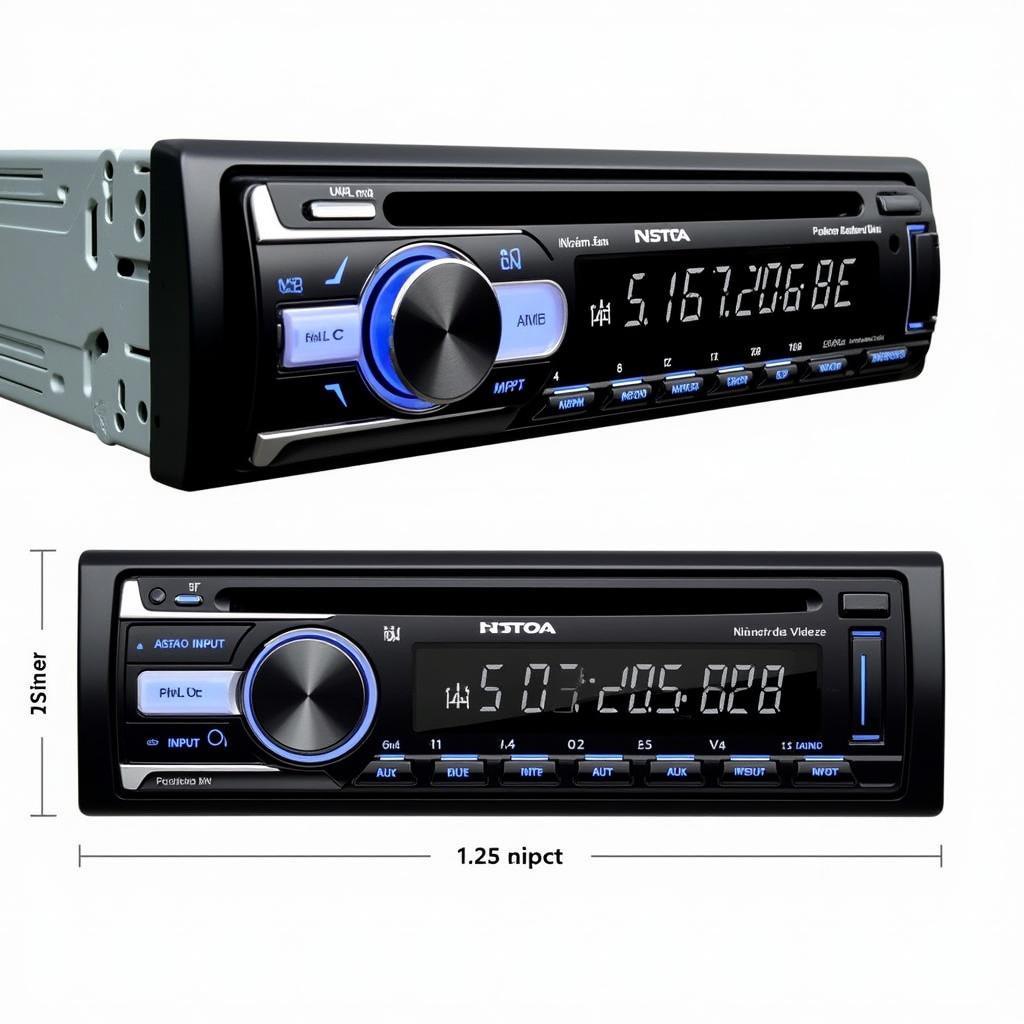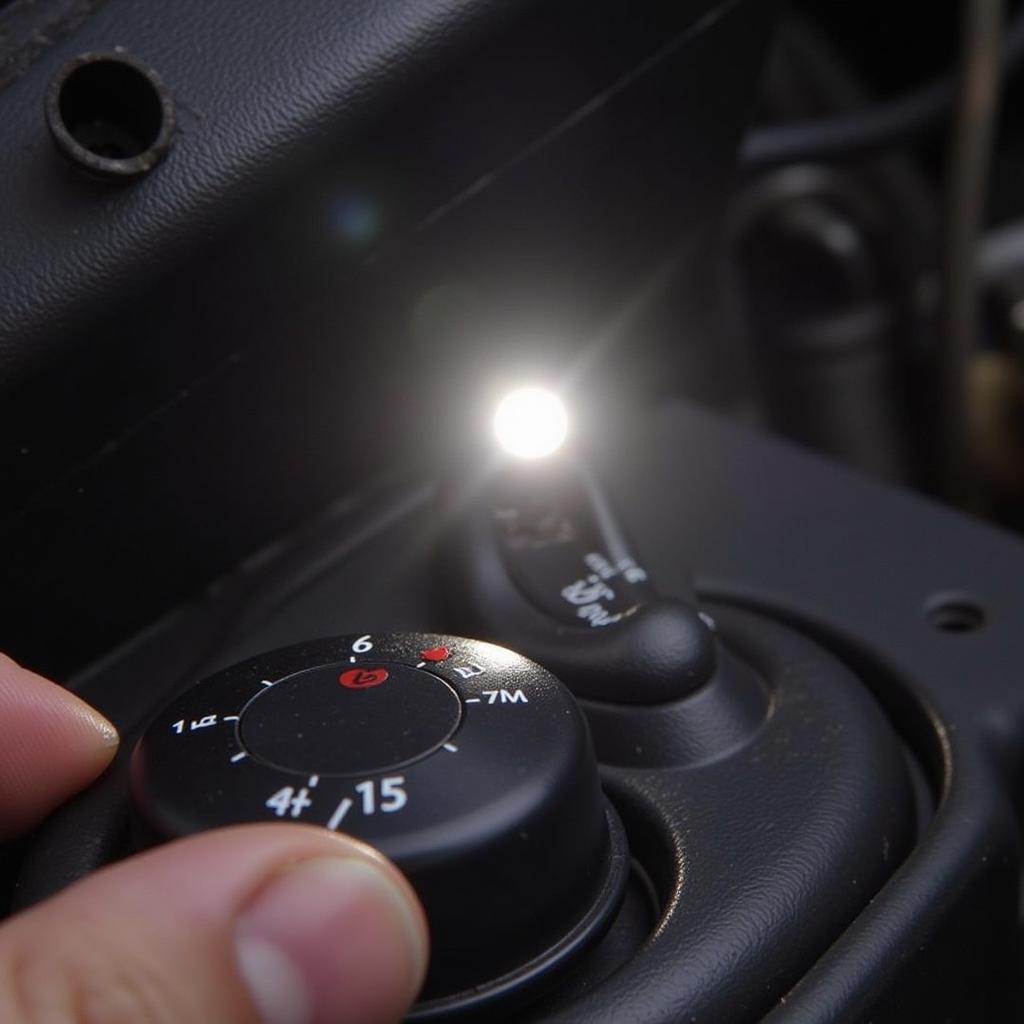The 2008 Chevy Silverado brake warning light can be a frustrating issue, but understanding its causes and solutions can save you time and money. This comprehensive guide will walk you through common causes, troubleshooting steps, and potential solutions for the 2008 Chevy Silverado brake warning light, empowering you to address the problem effectively.
If your 2008 Chevy Silverado brake warning light is on, it’s crucial to address it promptly. This light serves as an important indicator of potential issues within your braking system, ranging from simple fixes like low brake fluid to more complex problems requiring professional attention. Ignoring this warning could compromise your safety and lead to more extensive and costly repairs down the road. More information can be found at 2008 silverado brake warning light.
Common Causes of the 2008 Chevy Silverado Brake Warning Light
Several factors can trigger the brake warning light in your 2008 Chevy Silverado. Identifying the root cause is the first step towards a solution. Here are some of the most frequent culprits:
- Low Brake Fluid: This is often the most common and easiest issue to resolve. A leak in the brake lines, worn brake pads, or a faulty master cylinder can cause low brake fluid.
- Worn Brake Pads: Brake pads are designed to wear down over time. When they reach a certain point, a sensor triggers the warning light.
- Faulty Brake Sensor: The sensor itself can malfunction, triggering the warning light even if the brake pads are fine.
- ABS Issues: Problems with the Anti-lock Braking System (ABS), such as a malfunctioning wheel speed sensor or a low ABS fluid level, can illuminate the brake warning light.
- Parking Brake Engaged: Sometimes, the simplest explanation is the right one. Make sure your parking brake isn’t engaged.
- Faulty Master Cylinder: The master cylinder plays a vital role in distributing brake fluid. If it’s leaking or malfunctioning, it can cause the warning light to illuminate.
Troubleshooting the 2008 Chevy Silverado Brake Warning Light
Before rushing to a mechanic, there are several troubleshooting steps you can take to diagnose the issue.
- Check the Parking Brake: Ensure the parking brake is fully released.
- Inspect Brake Fluid Level: Check the brake fluid reservoir. If it’s low, add the correct type of brake fluid. Be mindful, however, that consistently low brake fluid often indicates a leak requiring professional attention.
- Visually Inspect Brake Pads: If you’re comfortable doing so, visually inspect your brake pads for wear. Thin pads indicate the need for replacement.
Why is my brake light on but brakes work fine?
Sometimes, the brake light might come on even if your brakes seem to be functioning correctly. This can be due to a faulty sensor or a minor issue within the ABS system. While the brakes might still work, it’s essential to diagnose the underlying problem to ensure optimal braking performance and safety.
“A seemingly functional brake system with an illuminated warning light should never be ignored,” advises John Davis, a certified automotive technician with over 20 years of experience. “It’s like a ticking time bomb. Addressing the issue promptly can prevent a minor problem from escalating into a major safety hazard.”
Solutions for the 2008 Chevy Silverado Brake Warning Light
Depending on the diagnosed cause, several solutions can address the brake warning light issue:
- Add Brake Fluid: If the fluid level is low, add the recommended brake fluid for your 2008 Chevy Silverado.
- Replace Brake Pads: Worn brake pads require replacement. This is a relatively straightforward procedure for those with some mechanical aptitude.
- Replace Brake Sensor: If the sensor is faulty, replacing it can resolve the issue.
- Address ABS Issues: Diagnosing and repairing ABS problems often require specialized tools and expertise, making professional assistance recommended. For more specific information on the 2500 diesel model, visit 2008 chevy silverado 2500 diesel brake warning light.
Can I drive with the brake warning light on?
While you might be able to drive a short distance with the brake warning light on, it’s highly discouraged. Driving with a potential brake issue compromises your safety and the safety of others. It’s crucial to have the problem diagnosed and resolved as soon as possible.
“Ignoring a brake warning light is like playing Russian roulette with your safety,” warns Sarah Miller, a leading automotive safety expert. “Even if your brakes seem to be working fine, there could be an underlying issue that could lead to brake failure in a critical situation.”
Conclusion
The 2008 Chevy Silverado brake warning light serves as a vital safety indicator. Addressing the underlying issue promptly is essential for safe and reliable vehicle operation. By understanding the common causes and implementing the troubleshooting steps outlined in this guide, you can effectively resolve the problem and ensure your 2008 Chevy Silverado’s braking system is in optimal condition. If the issue persists, seeking professional assistance is always recommended. Remember, maintaining a well-functioning brake system is paramount for your safety and the safety of others on the road. Don’t ignore the 2008 chevy silverado brake warning light!
FAQ
- What does the brake warning light mean? The brake warning light signals a potential problem within your braking system, such as low brake fluid or worn brake pads.
- Is it safe to drive with the brake light on? It’s not recommended to drive with the brake light on. Have the issue diagnosed and repaired as soon as possible.
- How do I check my brake fluid level? Locate the brake fluid reservoir under the hood and check the fluid level against the minimum and maximum markings.
- How often should I replace my brake pads? Brake pad lifespan varies depending on driving habits and conditions, but typically they should be replaced every 25,000 to 70,000 miles.
- What are the signs of a bad brake master cylinder? Signs of a failing master cylinder include a soft or spongy brake pedal, low brake fluid, and difficulty stopping.
- How much does it cost to replace a brake sensor? The cost varies, but typically it ranges from $50 to $150, including parts and labor.
- What should I do if I’ve added brake fluid, but the light stays on? If the light remains illuminated after adding brake fluid, there’s likely a more serious issue requiring professional attention.


